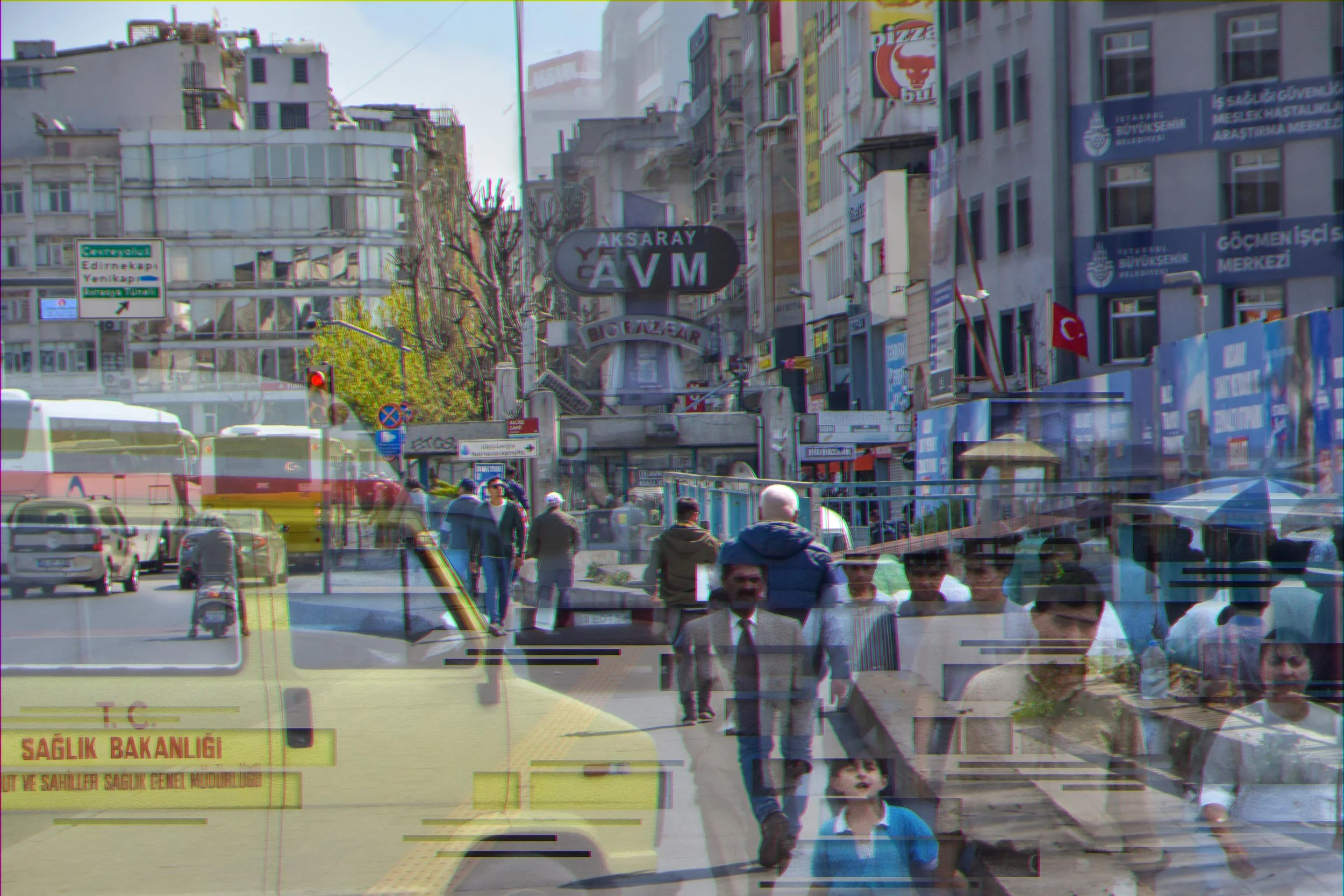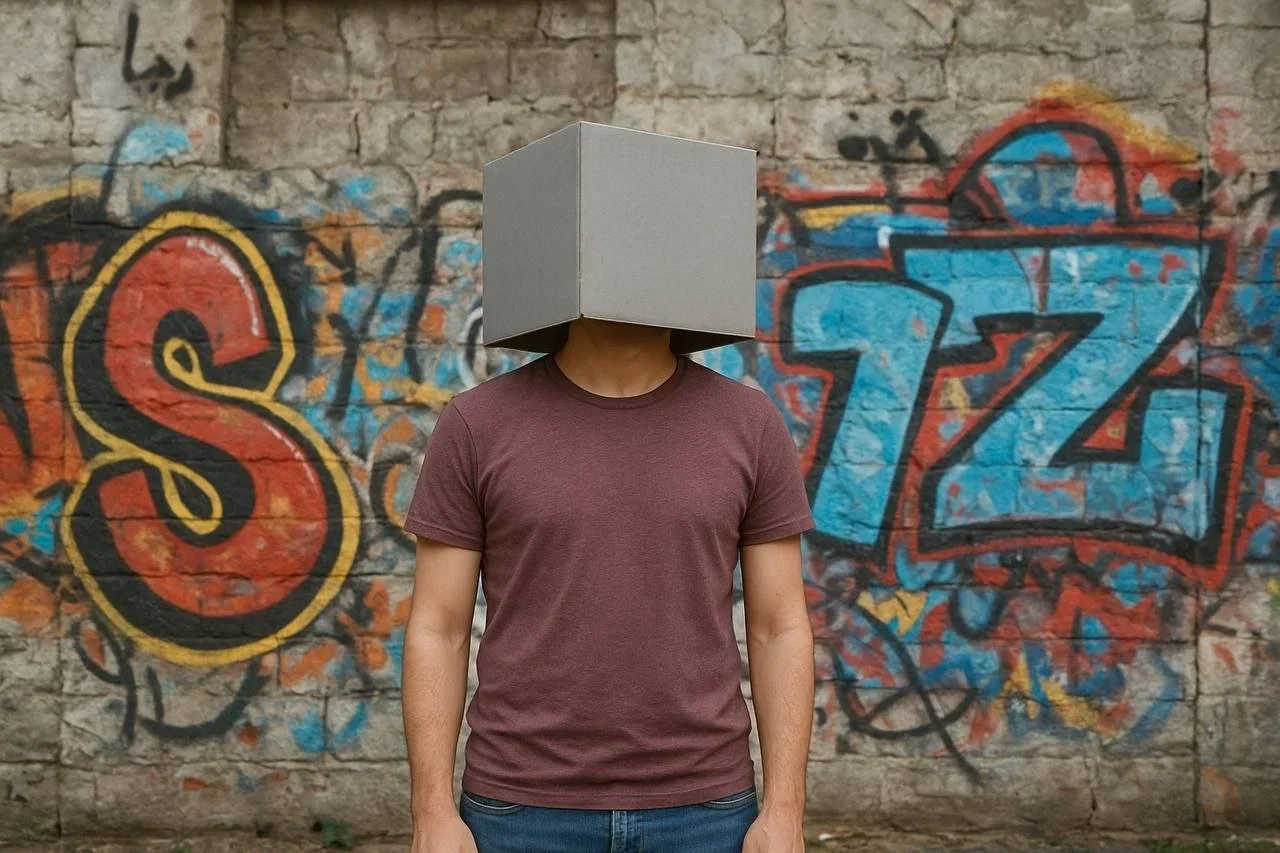10 Questions with Emily Saurack
Growing up in suburban Westchester county New York, just 25 miles north of cosmopolitan New York City, Emily Saurack developed a penchant for Photography, Food, and French, all of which have, at one point or another, converged. Her love for photography originated from her infatuation with the pastel-colored images she admired in her cookbook collection. From there, she became obsessed with French culture and cuisine, dreaming of one day traveling to France with her camera strap draping across her back and the shutter clicking beneath her finger.
Travel became an impossible dream during the pandemic years, and telling a story with her camera became her reality. Emily found herself looking more closely at people's eyes and admired deteriorating architecture, which was on full display in ghost-town streets. She watched weeds grow and fallen apple rot, then positioned them center stage in her photos. She learned to play games with her images, directing viewers' gaze to what she wanted them to see. This hobby became an obsession, where she lost track of time while wandering through streets and even more time redesigning the images on the screen. She joined a photography group and continued to share her vision with anyone interested in peeking through her lens. Emily's work has been displayed nationally and internationally.
Emily Saurack portrait
ARTIST STATEMENT
No stroll through the woods was complete for Emily without a photo of nature’s gifts: mushrooms sprouting or white light peeking through a green canopy. But when Covid hit, nature suddenly seemed ominous. Inspired by artists like Turner, whose violent oceans capsized ships, and Caravaggio, who placed a gruesome spotlight on disease, each day Emily attempted to reveal nature’s wrath through her camera’s lens: red brick beneath wind- and salt-scarred salmon stucco; a runner’s sunburnt skin against a deserted snow-covered landscape; and a fallen apple’s white flesh rotting in dark soil. She used Photoshop to morph her images, at times inserting vines under her human subjects’ skin to demonstrate nature’s fury and other times capturing the suppressed joy that had been hidden behind a mask.
Emily knew that her Armenian great-grandpa, who retouched black and white portraits with charcoal in the former Soviet Union, often transformed expressions. This inheritance reminded Emily that while nature can destroy, she also heals, and creates students like her to record and reflect on her beauty and might for future generations to see.
Home Invasion, Photography, 2021 © Emily Saurack
INTERVIEW
First of all, introduce yourself to our readers. Who are you, and how did you start experimenting with images?
I am a young artist, still exploring my style and conjuring the best ways to reflect my thoughts in my images.
After my first photography class several years ago, I was hooked on the process and the story that emerged. On the surface, photography simply delivers a facsimile of what’s before us. Still, I quickly realized that there is so much more that can be conveyed about the imagination and ideas of the photographer, which could slant the photos and provide viewers with food for thought. I continued taking classes and joined a photography mentorship group where I learned more about myself and how to impress my thoughts and tell a story through my images.
How would you define yourself as an artist?
I like to think of myself as a risk-taker. Some of my riskier images morph in the supernatural or highlight something not obvious or visually disturbing to grab viewers’ attention. The end result is initially shocking or upsetting, but in conjunction with my titles, which I spend a great deal of time composing, I hope that it gives viewers a chance to reflect.
Almost Out, Photography, 2021 © Emily Saurack
Mixed Messages, Photography, 2021 © Emily Saurack
Can you tell us about the process of creating your work? What is your artistic routine when working?
I take my camera with me wherever I go, whether it be busy city streets or quiet walks by the lake. I look for moments of emotion from people and things around me, and I take lots of pictures, hoping that the image that I will produce will reflect the story that I saw in the subject. With the help of Photoshop editing tools, I attempt to emphasize the deeper meaning that was obvious to me when I took the photo. I use plenty of selective color to highlight specific parts of my images while leaving the rest black and white. With this series of work, I often tried to morph nature with human skin, and to do so, I spent hours on Photoshop making sure every detail was perfect. For example, in one of my photos, I separately photographed vines and precisely inserted them under my subject’s skin so that it appeared as though they were there naturally emerging from under her skin. The final part of my process, which is one of my favorite parts, is naming my images, because it allows me to hint at the meaning of the image while leaving room for interpretation.
Your work seems to be highly influenced by the recent global pandemic. How did this impact you as a person and how you capture images?
The global pandemic gave me a lot of time to think, and with that thinking came a lot of long walks with my camera. With the extra time on my hands, I could dive deeper into Photoshop and explore what I could do with my images to tell a story. I learned to be more connected with my environment, look more closely and admire what is around me, and appreciate how small we are compared to the natural world around us.
Unliked Lichen, Photography, 2021 © Emily Saurack
In your statement you mention Turner and Caravaggio, but also your great-grandpa as sources of inspiration. Can you tell us more? How do you mix such different influences?
Over generations, artists have depicted the human struggle in various ways. The loneliness of the pandemic reinforced to me just how powerful nature can be, and while we adore it for all its gifts, it can literally squash us, kind of like David facing Goliath. I studied artists who highlighted this struggle with nature. Turner’s works depicting tumultuous seas and furious skies always come to mind when thinking about how small we are when compared to how big and powerful nature is. Caravaggio’s depiction of nature’s might is not as obvious: he highlights devastation in his subjects’ eyes in response to destructive diseases. In my images, I attempted to capture the emotion of what nature takes away, but also humanity’s steadfast opposition to nature’s powers.
Ah, my great grandfather, Dedushka Sasha, an Armenian living in the Soviet Union - fifty, sixty years ago or so, before Photoshop, he retouched black and white photos with charcoal, correcting blemishes and even altering expressions. With just a minor addition of a line or dot or some shading, he was able to change an image. I knew my great grandfather when I was younger but I didn’t know this about him until more recently when I began altering my images, and my mother told me about his craft. I’ll have hundreds of images and I will see something in one that I want to shout to viewers, so I take it and tweak something so minor, like eye color or a shadow’s intensity and the narrative evolves. Other times, I mystify my images with the supernatural to take my audience on a thought expedition. And I think to myself, here I am, generations later, using my imagination and modern technology to do exactly what my great grandfather did with his pencil and his imagination many years ago.
What messages do you want to convey with your series of photographs?
When I look at a person’s face or even objects, I can see how they have been affected by their surroundings or environment. My photos, especially those that morph nature to human flesh, expose our naivete to nature’s beauty, having caused much of her destruction, and we are now in receipt of her payback.
How do you differentiate your work from the rest? In other words, what do you feel makes it unique and truly your own?
I have a love for simplicity, and I think that black and white photos express it more honestly. I also savor the emotion of vibrant colors, without which black and white photography is often left to feel too much like a documentary rather than a point of view. So in my work, I marry the objectivity of black and white with the color of my thoughts to tell the story from my perspective.
Do you find that the shift to digital exhibitions and art fairs has helped you promote your work?
The digital world is a game-changer for every industry because it disperses information across the globe instantly, shrinking our world and helping us connect with one another. In the case of exhibitions and art fairs, I’ve been able to see the works of artists who, just a few years ago, would never cross my path, from whom I can gain insight that I can pass on to my own work, which I hope others see and pass on to theirs. In so doing, we are creating a globally more supportive community of art, as it reaches across borders. But to answer your question more simply: emphatically yes, my work has gained recognition thanks to the digitization of the art world.
Fractured Façade and Fortitude, Photography, 2021 © Emily Saurack
Usurped by Euphoria, Photography, 2021 © Emily Saurack
What do you think about the art community and market?
I’m relatively new to the art community, but I have found it immensely supportive. Progress in all areas depends on creativity, so I am proud to be part of a community built upon creativity. I love to see what my peers create with their imaginations, and welcome their feedback on my work.
As for the art market, that is a tricky question. The shift to digital exhibitions has facilitated the spread of art throughout the world, but making it abundant and accessible is a double edged sword, as established artists risk losing their primary markets. Also, the escalation of the NFT market in art is going to change the trajectory for artists in the next decade; I’m hopeful that it will be for the better!
Finally, any projects you are looking forward to for this year?
Yes! I’m always working on a project and thinking about the next one. I started a new series over the winter, still inspired by the global pandemic. I am focusing on street photography, capturing the pros and cons of “loneliness.” I say pros and cons, because being alone isn’t all bad - for many there is solace in finding time to oneself, and after two years of social distancing, people are accustomed and therefore comforted by being alone. But for many, loneliness is painful. I hope to capture these feelings and portray them to my audience in this series.






















